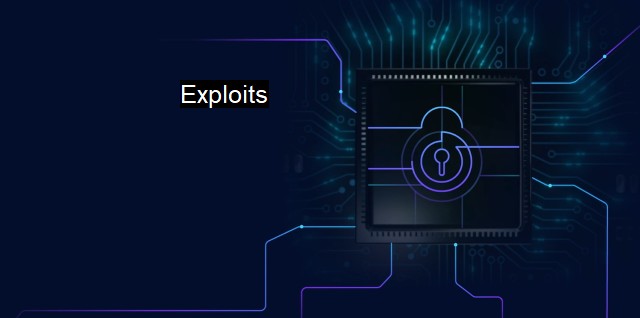What are Exploits?
Understanding the Threat of Cyber Exploits: Protecting Against High-Risk Penetration to Your System
Exploits refer to predisposed software code, inputs, or commands that take advantage of specific software, programming loopholes, or system vulnerabilities. An exploit is typically aimed at breaching the security zone of a network or a system to instigate malicious activities or potentially harmful outcomes such as denial of service attacks, unauthorized data manipulation, and illicit access privileges. To the untrained eye, these flaws might seem inconspicuous; for hackers, they are opportunities to infiltrate systems or networks unperceived.As software systems and applications interconnect more than ever before and the spotlight on digital intrusion harshens, the discussions around exploits increasingly become relevant. Exploits are resident in varying types of software systems and applications — spanning operating systems, web browsers, emails, office software, and antivirus solutions. The susceptibility to exploit varies based on the type of software, the existence and nature of problem patches, the specific devices used, and users' online behaviors.
There are two predominant types of exploits — known and zero-day. Known exploits are those vulnerabilities that the software manufacturers or the cybersecurity community have already discovered. Following this discovery, the responsible parties typically devise patches to rectify these vulnerabilities. These patches are then shared with the user community so they can update and secure their systems. But, if the end-users don't apply these patches promptly and accurately, their systems remain susceptible to these known exploits.
Zero-day exploits, on the other hand, represent yet-to-be-discovered vulnerabilities. Since cybersecurity specialists are unaware of these, they cannot develop patches or plan defenses against them. Thus, these are more prized by hackers because they afford more undeterred time and space for illegal activities. Finding zero-day exploits is akin to a race against time between the cybercriminals and the cybersecurity experts where the first ones to find these vulnerabilities will gain an upper hand in the digital realm.
Developers are generally humane, and they make errors. Miscreants exploit these flaws before they are identified and corrected. Be it adding an extra line of code in the wrong place or giving an array the wrong size; they all can stand as potential landmines for exploitation. even after identification, these loopholes don't always lead to widespread destruction. Mostly, they just sit quietly in system backgrounds all until a hacker pushes the right buttons.
On the other side of the equation are the cybersecurity professionals and antivirus software companies. Their task is to anticipate, discover, and neutralize the effectiveness of these exploits. They employ systematic actions that include continuous monitoring, using advanced software to identify possibilities of exploits and taking proactive measures. They utilize several stages of penetration testing and vulnerability scanning that help bring these errors to light.
More than just discovering these exploits, cybersecurity specialists are responsible for monitoring data traffic within and across systems. This data surveillance helps to identify any abnormal behavior in the system, therefore hinting towards a potential exploit. Once an exploit is identified, specialists jump into action to contain the threat and update the system, biting to thwart the malicious records from breaching the security perimeter.
An inexpensive yet effective way of prevention is to continuously update the antivirus software. These updates are developed with the latest defenses against known exploits and they buttress your system's protection level against possible threats. A mindful layer of protection includes conducting regular backups, safeguarding systems with passwords, using encrypted communication, and educating users about the possible channels of breach like phishing emails and harmful websites.
In the end, the fight against exploits is a necessary but fitting testimony to human progress and technological advancement. As our technologies evolve, so do exploitation methods, which implies that we must remain a step ahead in identifying and safeguarding against exploits. Even though the exploits are menacing, they consequentially lead to solidified security mechanisms, effectively raising the bar for hackers.

Exploits FAQs
What is an exploit in cybersecurity?
An exploit in the cybersecurity realm refers to a program or code that takes advantage of a vulnerability found in a system, application, or network.How do exploits work in antivirus software?
When an exploit is detected in antivirus software, the software will try to prevent the exploit from executing by blocking the vulnerability or patching the system.What is the difference between a vulnerability and an exploit?
A vulnerability is a weakness or flaw in a system, application, or network that can be exploited by an attacker through the use of an exploit. In other words, an exploit is the tool or program that takes advantage of the vulnerability.How can I protect my system from exploits?
To protect your system from exploits, it is recommended to keep your software and operating systems up-to-date with the latest security patches. It's also important to use antivirus software and a firewall to block unauthorized access to your system. Additionally, avoid clicking on suspicious links or downloading files from untrusted sources.| | A | | | B | | | C | | | D | | | E | | | F | | | G | | | H | | | I | | | J | | | K | | | L | | | M | |
| | N | | | O | | | P | | | Q | | | R | | | S | | | T | | | U | | | V | | | W | | | X | | | Y | | | Z | |
| | 1 | | | 2 | | | 3 | | | 4 | | | 7 | | | 8 | | |||||||